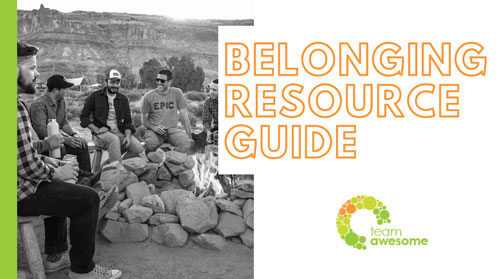Here’s a scenario for you to consider: There’s a giant deadline looming, or a big decision that will affect your life and career. Handing things in late fills you with dread and self-loathing…but you do it anyway.
You meticulously plan well-thought-out ideas, but dismantle them on a daily basis; opting instead to ignore that looming deadline, hide important emails, and test the strength of your relationships—both personally and professionally. If things go wrong, or if you get feedback that’s not exactly positive, you feel it proves what you’ve suspected all along: that you are completely inadequate.
There’s a title for someone who falls into this pattern of behavior: It’s called being a Self-Saboteur. Being our own Self-Saboteur can stem from a lack of confidence in ourselves, or when we are stressed from our work, life, relationship, career aspirations, or all of the above. It is often our own conscious and deliberate act to protect ourselves, and our egos, from what we truly desire but are too afraid to reach out and claim.
So, how do we stop falling into our own pattern of self-sabotage and remain in a place of possibility and positivity? The first step is identifying what may be blocking us. In my coaching career, I’ve observed four personal blocks that lead directly to being our own saboteur.
The four personal blocks are:
Limiting Beliefs
These are beliefs that we believe to be invariable. They are, in a way, rules that the universe has set in place. We may have beliefs about ourselves and our self-identity, the world in general, or in our own abilities and permission we grant ourselves.
They may sound like, “Men don’t cry,” or “You have to be tough to be listened to.” Our limiting beliefs are just that—limiting. In just believing them we do not think, do, or say what’s needed to break ourselves from their constraints.
So ask yourself, where did that belief come from? What would your life look like if you let it go?
Interpretations
Our interpretations are the stories we tell ourselves to fill in the gaps between what we believe to be true. We often do this instantaneously and below the surface of our conscious awareness. We tell ourselves all sorts of stories about who we are, who other people are, and what might be going on around us.
Our inner dialogue may be along the lines of, “She didn’t even say hi. She must be mad at me,” or “I didn’t get the job…I must not have met the qualifications.”
If we become aware of our interpretations and stop ourselves from taking them as truth, we might just find out that we created a whole lot of fiction that was (A) poorly written and (B) holds ourselves back in some way.
What if you looked at the situation differently? If you asked yourself how someone with a completely opposite viewpoint looked at the situation, what do you think they’d say?
Assumptions
At some point, we all have had something happen that has ground us to a halt. It may have been a negative message we received from a boss or an embarrassing work experience. How we process these experiences are our assumptions.
You might assume that the reason you never get the job is because you are a woman, or that you always get the short end of the stick because you don’t like to assert yourself.
The first step to overcoming this block is to acknowledge and validate that “something” that has us frozen in place. Then ask yourself, “Just because this has happened in the past, why must it happen again?”
Our Inner Critics
We all have inner critics that hijack the conversation and whisper inside of us to sit down and play small. They may tell us that we are not good enough, smart enough, thin enough, or just plain insufficient as we are. They try to contain us in order to keep us safe.
Bridget is my capital “C” Critic. She is always worried about the “what if” and is the original shit-talker of how I should be better or more of something. So how do I tell Bridget to kindly sit her ass back down? By removing what is no longer working for me and replacing it with more of what I really want.
Have you heard of level one energy? There are seven total in the Energy Leadership Index Assessment. When you are at level one you are more likely to be affected by certain thoughts, beliefs, and perceptions that hold you back from success. When we operate on this level, we might feel stuck and lacking in any choices or options we might have.
There is a difference between the thoughts of “I did something stupid” and “I am stupid.” Your gremlin, or inner critic, is the latter. When you are able to understand what drives your perceptions and actions so that you can recognize and change habits that don’t serve you, you are able to tell your own gremlin thanks, but not today.
If you were to study your blocks, would you be able to tell when and in which situations they show up? When they do, are you able to identify which thoughts lead you to act in way that has you turning into your own saboteur?
It’s Time To Break Through Old Thoughts
There’s an exercise I like to use to become aware of my blocks, change how I react to them in the moment, and break my old thoughts to create new actions.
I like to call it the “take it apart, examine it, and build it better” scenario.
To start, think of a situation where you may have a block show up. What thought do you have when it comes to this situation? What feelings do you have when you think about it? What action do you take?
Think of that situation again…but from a different perspective. What would a more powerful thought be? Now imagine that thought is true. What would that feel like? Based on your new thought and emotions, what new actions are you willing to take?
In facing your blocks and using this exercise to lay down the foundation for new actions, you are going to experience greater levels of fulfillment as you kick your saboteur behavior to the curb.
About the author: Katie Rasoul is the Chief Awesome Officer for Team Awesome, a leadership coaching and culture consulting firm. Find out more by visiting www.teamawesomecoaching.com or join the Team Awesome Community for awesomeness coming straight to your inbox. Follow Team Awesome on Facebook and Twitter, and Katie Rasoul on LinkedIn and Instagram.
About the author: Katie Rasoul is the Chief Awesome Officer for Team Awesome, a leadership coaching and culture consulting firm. She is a TEDx speaker alumna, author of the best-selling book, Hidden Brilliance: A High-Achieving Introvert’s Guide to Self-Discovery, Leadership and Playing Big, and co-host of The Life and Leadership Podcast.
Find out more by visiting www.teamawesomecoaching.com or join the Team Awesome Community for awesomeness coming straight to your inbox. Follow Team Awesome on Instagram, Facebook and Twitter.
See more about Katie’s keynote presentation on the topic “Stop Being Your Own Saboteur” here.



Recent Comments